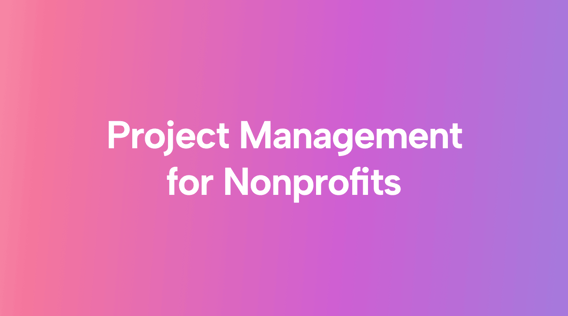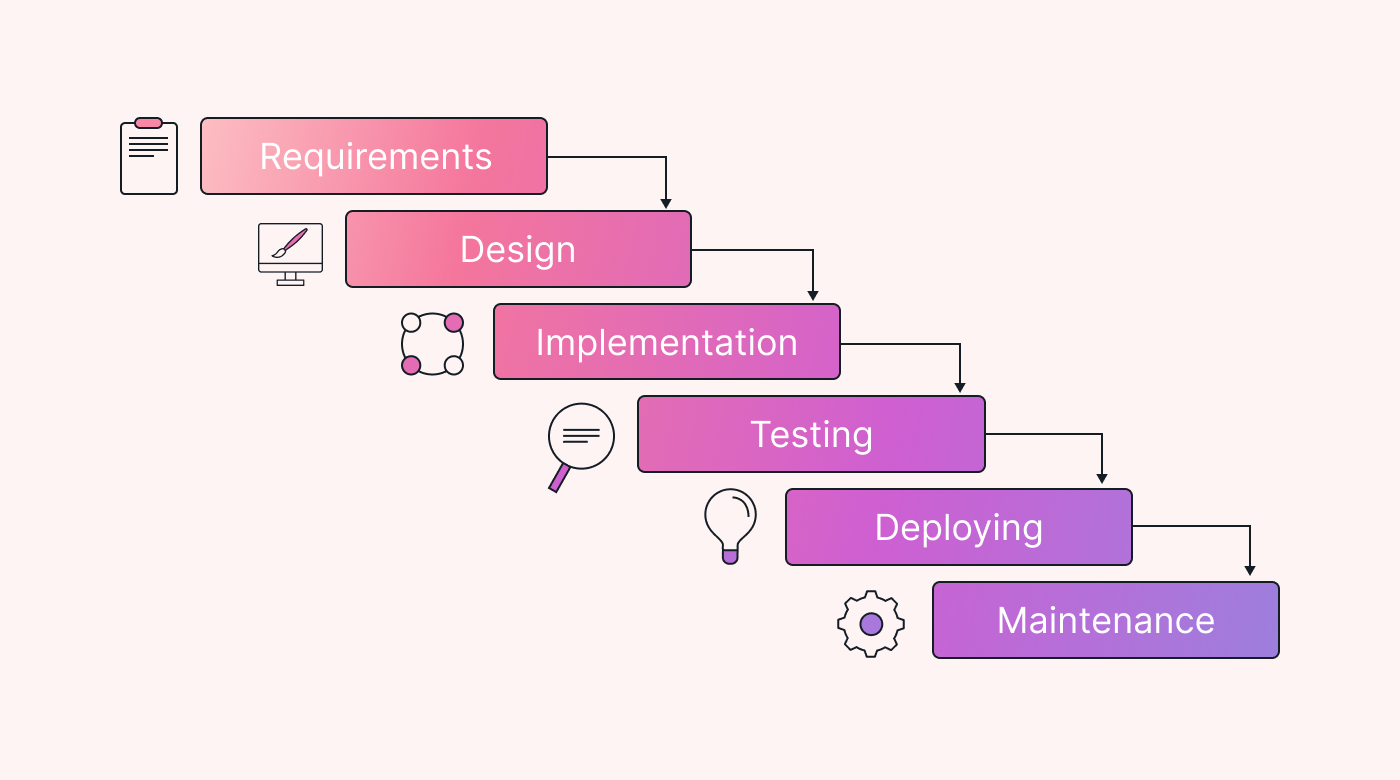Nonprofits do great work, often filling in the gaps left by inefficient bureaucracies and, in some countries around the world, incompetent or corrupt governments. But if one thing characterizes nonprofits more than any other, nonprofit teams almost always have limited resources.
The financial aspect isn’t just because donor funding can be erratic. It’s also because the less you spend on delivering something, the more of it you’ll have to deliver. It’s about bang for your buck because that keeps the big donors dipping into their pockets.
The way to do that is through greater efficiency. And that’s what project management principles strive to do: deliver successful projects on time and within budget, which makes them a natural fit for the nonprofit sector.
But there’s a perception problem. Nonprofits are often looking for intangible outcomes from their interventions. Things not easily measured, like “less human suffering,” “better understanding of a social issue,” “a safer community for children,” or “an increased awareness.”
Since the focus of the project management discipline is usually on delivering tangible products or services, people in the nonprofit sector can’t always see how it can help them. But you’re still providing a service, so how could it not?
In this article, we'll dive into how project management can help non-profit organizations deliver on their project goals, be it fundraising events or global hunger eradication.
Two approaches to the problem
At its most basic level, project management means breaking down a big job into a set of smaller, actionable tasks and then managing them through the project lifecycle. You'd allocate resources to the tasks, track progress throughout, and deliver the job on time and within budget. And, along the way, you must always consider (and act on) the input from project stakeholders.
Project management tools and software help you centralize all your project-related information, track progress, manage resources, and collaborate with your team (all within one central app). More importantly, it helps you to deliver a successful outcome on your project.
There are two broad approaches to successful project management: the waterfall model and the Agile method. Which is best for your nonprofit depends on what you want to achieve and the environment you're working in.
Waterfall
The waterfall methodology is best described as a linear, sequential approach to managing a project. It is a step-by-step process, with each phase building upon the results or output of a previous one. You can think of it (aptly) like a waterfall, where progress cascades steadily downward.
It's a tried-and-tested approach that's been used successfully for many years and on very large and complex projects. There are three main advantages of the waterfall method:
- It provides you with a simple project structure.
- You define your end goal early in the process.
- The project is defined and planned, as much as possible, upfront.
But there are disadvantages to this approach, too, which can account for the rise in popularity of Agile project management.
- The rigid structure makes embracing change difficult.
- Its phases (and the team) are somewhat siloed.
- Testing happens at the end.
Agile
The Agile methodology is a set of principles and practices that focus on the continuous delivery of value. The method became popular as an iterative software development process that was first implemented at scale in automobile manufacturing.
Where waterfall projects can involve large "always-on" teams, Agile projects use smaller teams working in short cycles (a.k.a. sprints). Their goal is to make incremental improvements to a product or service. The development team (do'ers) can change from one sprint to the next.
The pros of the Agile method include:
- Flexibility allows it to embrace and adapt to change.
- Short bursts of development (work) provide immediate feedback.
- Constant testing prevents bad or useless work.
But there are also cons:
- The flexibility makes documentation difficult, if not impossible.
- Scope creep is also a possibility when things change too much.
- Its iterative nature can extend the project timeline.
- The lack of strategic planning upfront can cause confusion during development.
Which is best: Agile or waterfall?
The choice of Agile or waterfall will depend on the project you're tackling, your team (and their experience), and your preferred project management processes. You'd need to balance the pros and cons to decide on the best method for you and your team. The good news is that most of the software tools around today can handle both.
The how and why of project management for nonprofits
Nonprofit project management means getting your important, mission-based projects completed. These could be:
- One-off events
- Campaigns
- Disaster response initiatives
- Detailed fulfillment projects
- Prospect research
- Moves management
- General marketing
- Fundraising campaign
- Beneficiary programs
The common thread is that all these activities will involve multiple actors and many individual tasks to be completed. Keeping track of everything can be challenging, especially for people without a project management background.
Fortunately, technology has come to our rescue.
But sometimes too much choice is worse than not enough. The key is understanding what features you need, what's just "nice to have," and what you don't need.
What to look for in project management tools for nonprofits
While standard project management principles apply just as much to nonprofit organizations, there may be a few interesting tweaks in how these are applied. The tools you choose to use must be able to accommodate those tweaks.
Integrated communication
Experienced project managers will tell you that collaboration tools are critical for effective communication (and project success).
You must be able to touch base with your team whenever you need to, wherever they may be. That may be in another timezone and even on another continent. And the tools you use must encourage and enable collaboration among team members and stakeholders.
The project management tool you choose must also play nicely with the communications tools you already use in your nonprofit.
Progress tracking
Keeping a project on track means you need project management solutions that keep you up-to-date on the status of project tasks and the availability of your resources, 24/7. This includes alerts when something is taking longer than planned.
(Pro tip: it helps to know in advance which resources you can throw at those lagging tasks to get them back on track.)
Progress tracking means measuring the throughput and performance of project tasks at different points of the project. This helps you ensure your team is on track to meet deadlines, achieve goals, and complete the project on or before the due date.
Task management
You know the adage that the devil is in the details.
While progress tracking gives you the big picture, task management helps you with those (task) details.
By the way, this is a job where Artificial Intelligence (AI) can really help out with automation.
Let's say a critical resource needed for a particular task suddenly becomes unavailable. That task needs to be rescheduled, but the knock-on effect on other project tasks can make things very complicated. That's where a tool like Motion's AI-powered task manager can help you to automatically reprioritize tasks, reschedule meetings, and resolve calendar conflicts.
Scheduling and time tracking
Ditto on AI automation helping with resource scheduling and time tracking.
Resources cost money, something that's often in short supply in nonprofit projects. You can't afford to have expensive resources sitting idle. Tools like Motion can help you prevent that by automatically organizing team schedules, prioritizing tasks based on urgency and availability, and creating the most efficient schedule without overworking anyone.
Comprehensive reporting
Donors and funders of nonprofit organizations are notoriously demanding. They want evidence of the impact their investment has made or is making. To satisfy those demands, you need tools that provide detailed reporting and clearly illustrate the impact your project has.
Comprehensive reporting will also allow you to rapidly spot issues that pop up during the project, which (like the sun coming up), will happen.
If you have detailed reporting on tasks and schedules, it's also easy to identify deadlines that are slipping or milestones that are in danger of being missed.
Budget management
Because nonprofits often need to do more with less, managing the budget is the most important feature of a project management tool. You'll need one that allows you to set resource thresholds on every task and will alert you when tasks hit those thresholds.
For example, a team member doesn't have the resources or the skills they need to complete the task at hand. You must be alerted to the potential budgetary impact of this before it becomes an issue so that you can take steps to avoid it.
Having the tools to efficiently manage your budget and meet the reporting demands could secure the continued existence of your nonprofit organization.
Integration
Since the reporting demands of donors and funders can be quite complicated, it's important to be able to access data from a wide range of sources. This is where integration capabilities can help you build the reports that the money people want to see.
That also extends to marketing your nonprofit work. You must be able to pull in data from different sources, massage it, and build professional marketing collateral.
Integration will allow you to more easily update these types of reports after each project. Remember, automation helps you keep admin costs down, which trickles down to the bottom line.
Customization
The nonprofit sector is unique, and every actor in the ecosystem has their specific, unique needs. For this reason, your project management system must support customization.
Customizations to look for include customizable dashboards, views, workflows, rules, notifications, and reports.
Create custom fields and reports to track specific data. That'd spare you the chore of manually digging through different sources, documents, or spreadsheets.
Customization can also help with automation, which, as we've already seen, can save you valuable time.
Accessible support services
It's not uncommon for people working on nonprofit project teams to be nontechnical. That's because the sector tends to attract generalists rather than technicians.
 |
If your nonprofit generally lacks technical expertise, you'll need a project management tool with easily accessible and robust technical support for when things go hinky. And if you work in many different geographies, you may even need 24x7 support.
The alternative would be to choose a project management tool that's so simple to use that it's not likely to require support services in the field. Something like Motion may fit the bill.
Nonprofit discounts
There's a fly in the ointment.
Project management software can be costly, especially if you need to support unlimited users. But again, technology has come to our rescue. Today, there's a wide variety of options, and many of them offer a full-function free trial, a basic plan, or a limited-function free version.
Some of the bigger brands also offer discounts for nonprofits, but there can be eligibility requirements. TechRepublic compiled a useful comparison of such tools.
Finding the best solution for you
Like in the for-profit world, nonprofit organizations treat projects as temporary endeavors focused on delivering a unique product, service, or result. Most will have a rigidly defined timeline, clearly defined scope and require access to various resources.
A project can also rope in people with different skill sets who don't often work together (if at all). To boot, projects must finish on time, on budget, and deliver the expected product, service, or result.
To keep these balls in the air requires a strong project management focus and technology. Technology like Motion's AI-powered project management app.
With Motion you can:
- Add tasks to your team member's calendars
- Measure how much your team can get done
- build a prioritized, custom schedule for every team member
- Automate 90% of your project planning.
Try Motion now by signing up for a 7-day free trial.








